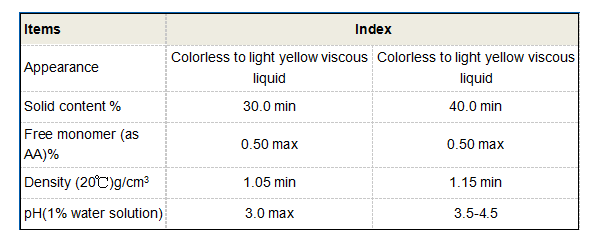partially hydrolysed polyacrylamide
Understanding Partially Hydrolysed Polyacrylamide Properties, Applications, and Benefits
Partially hydrolysed polyacrylamide (PHPA) is a versatile water-soluble polymer widely employed in various industries, including petroleum, mining, agriculture, and water treatment. This synthetic polymer is derived from the polymerization of acrylamide followed by partial hydrolysis, leading to a product that possesses unique physicochemical properties, making it an attractive choice for numerous applications.
Chemical Structure and Properties
Partially hydrolysed polyacrylamide consists of a backbone of polyacrylamide chains with functional carboxyl groups introduced through hydrolysis. The degree of hydrolysis plays a critical role in determining the polymer's properties, such as its solubility, viscosity, and charge density. PHPA is generally characterized by its high molecular weight, which can range from approximately 1 to 20 million Daltons. This high molecular weight contributes to its thickening ability, providing enhanced viscosity in solution, a feature that is essential for many of its applications.
The degree of hydrolysis, typically between 5% and 30%, dictates the ionic nature of the polymer. This partial hydrolysis allows for tunable characteristics; the balance between the neutral and charged groups enables PHPA to interact effectively with other chemical substances, making it suitable for various complex environments.
Applications of Partially Hydrolysed Polyacrylamide
1. Oil and Gas Industry One of the primary applications of PHPA is in enhanced oil recovery (EOR) techniques. The polymer is used to improve the viscosity of water flooding agents, facilitating increased oil displacement from reservoir rock. PHPA's ability to reduce frictional pressure losses during injection makes it a valuable additive in drilling mud and cement slurries.
2. Mining Processes In mineral processing, PHPA acts as a flocculant in the separation of minerals from their ores. It aids in the aggregation of fine particles, enhancing the efficiency of sedimentation processes. This application is especially significant in the extraction of valuable metals and minerals, improving overall yield while reducing waste.
3. Agricultural Practices In the agricultural sector, PHPA is used as a soil conditioner. By enhancing soil structure and moisture retention, it promotes healthier crop growth and reduces the need for excessive irrigation. The polymer also improves nutrient uptake efficiency, contributing to sustainable farming practices.
partially hydrolysed polyacrylamide

4. Wastewater Treatment PHPA serves as a coagulant and flocculant in wastewater treatment plants. It aids in the aggregation of suspended particles, enhancing the clarity of treated water. The use of PHPA not only improves the efficiency of sludge removal but also helps meet environmental regulations by ensuring that effluents are cleaner before discharge.
Benefits of Using Partially Hydrolysed Polyacrylamide
The benefits of PHPA are numerous, stemming from its unique properties
- High Viscosity PHPA imparts high viscosity to fluid systems, which can significantly improve fluid dynamics in drilling and mining operations.
- Environmentally Friendly With proper application techniques, PHPA can be environmentally benign. Its biodegradability makes it a safer choice compared to traditional synthetic additives.
- Enhanced Performance In oil recovery and mineral processing, the use of PHPA can lead to higher extraction rates, translating to increased economic efficiency.
- Versatility The ability to adjust the degree of hydrolysis allows for customized performance tailored to specific applications, making PHPA suitable for diverse industrial needs.
Conclusion
Partially hydrolysed polyacrylamide stands as a crucial material in various industrial sectors, thanks to its unique properties and beneficial applications. As industries continue to prioritize sustainability and efficiency, PHPA's role will likely become even more significant. Understanding its functionalities allows researchers and practitioners to innovate further and optimize its application across numerous fields, ensuring that resource extraction, agricultural practices, and environmental management align effectively with contemporary technological and sustainability goals. By capitalizing on the benefits of PHPA, industries can move towards more eco-friendly solutions while enhancing performance and productivity.
-
Water Treatment with Flocculant Water TreatmentNewsJun.12,2025
-
Polymaleic AnhydrideNewsJun.12,2025
-
Polyaspartic AcidNewsJun.12,2025
-
Enhance Industrial Processes with IsothiazolinonesNewsJun.12,2025
-
Enhance Industrial Processes with PBTCA SolutionsNewsJun.12,2025
-
Dodecyldimethylbenzylammonium Chloride SolutionsNewsJun.12,2025





